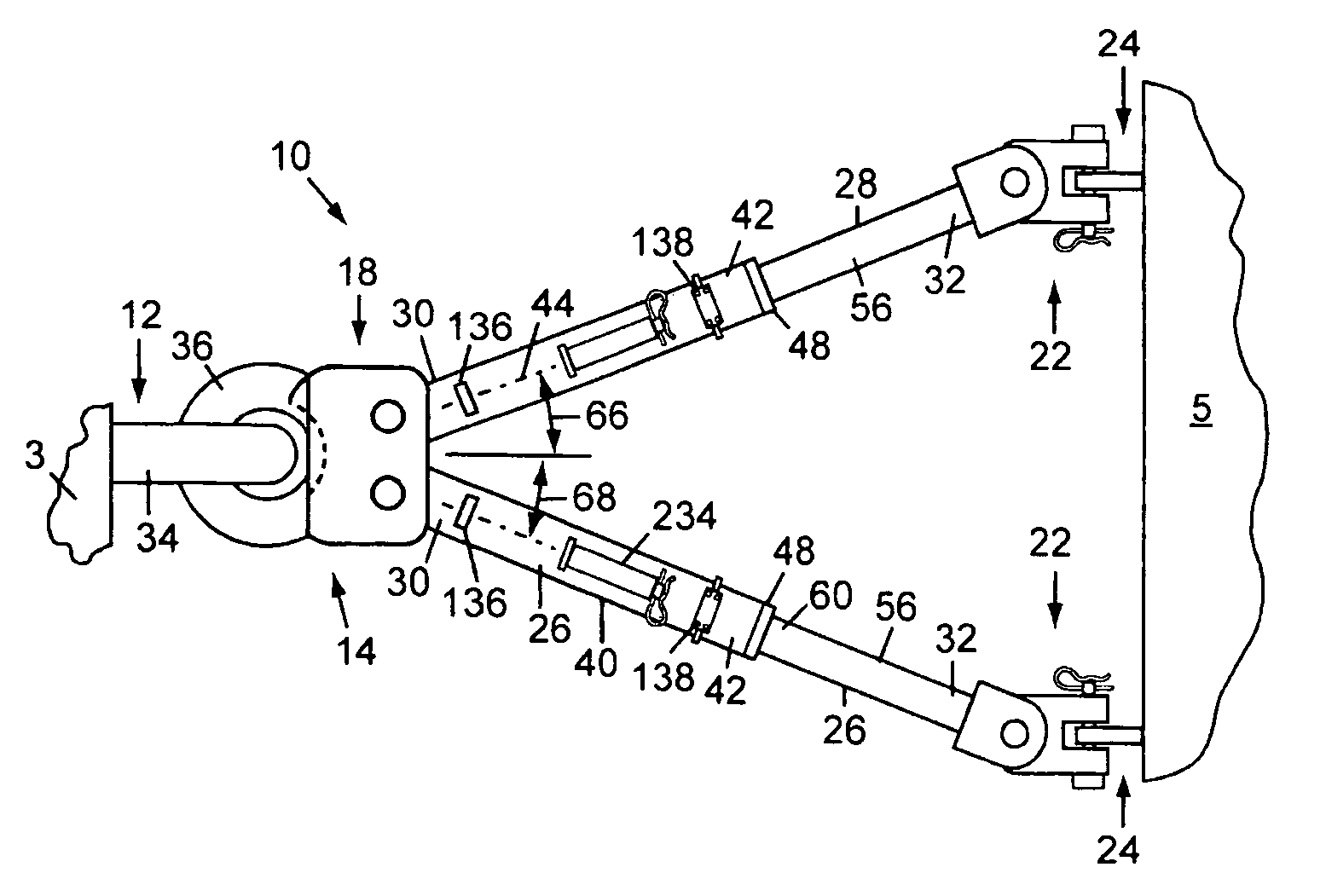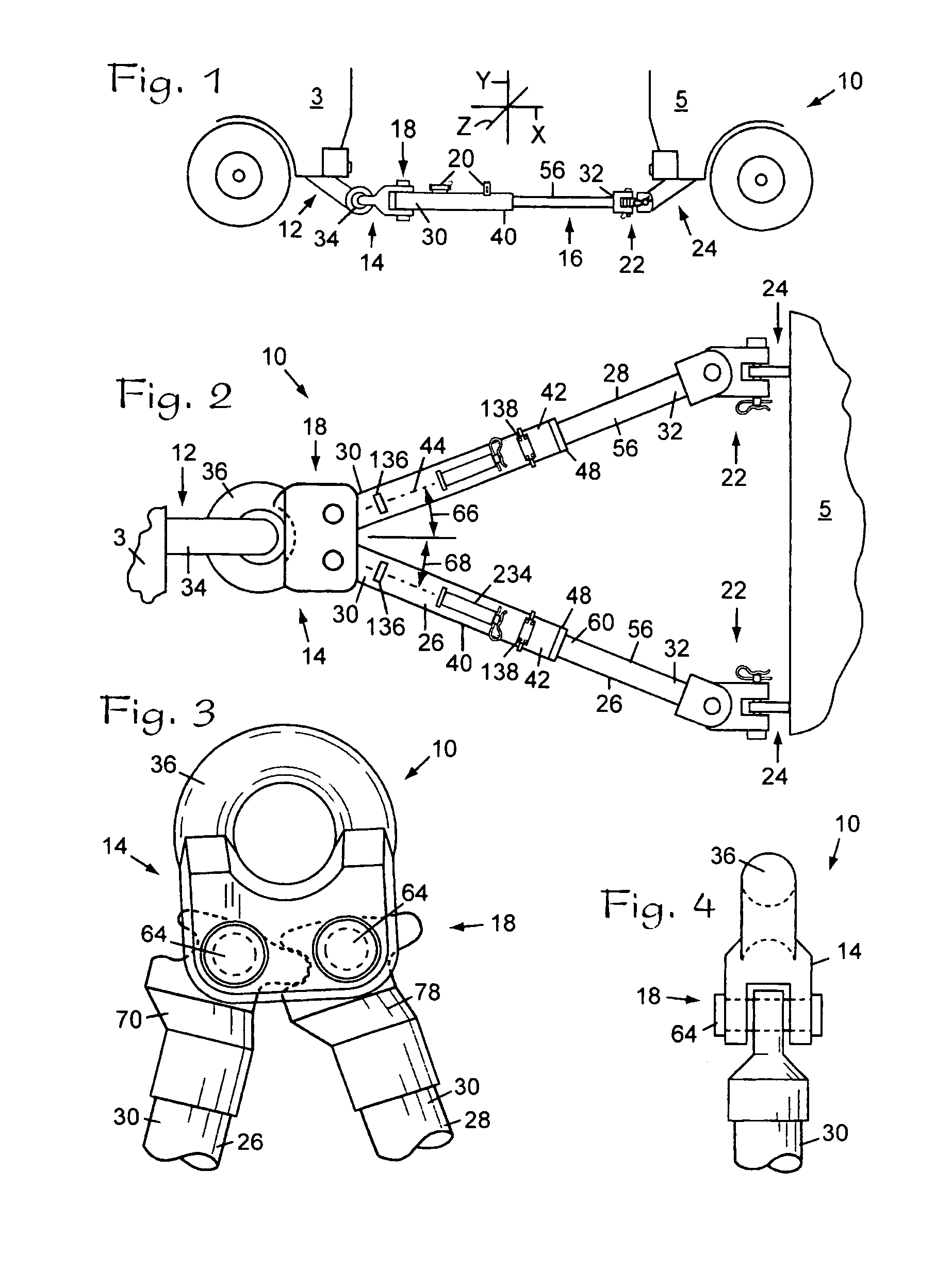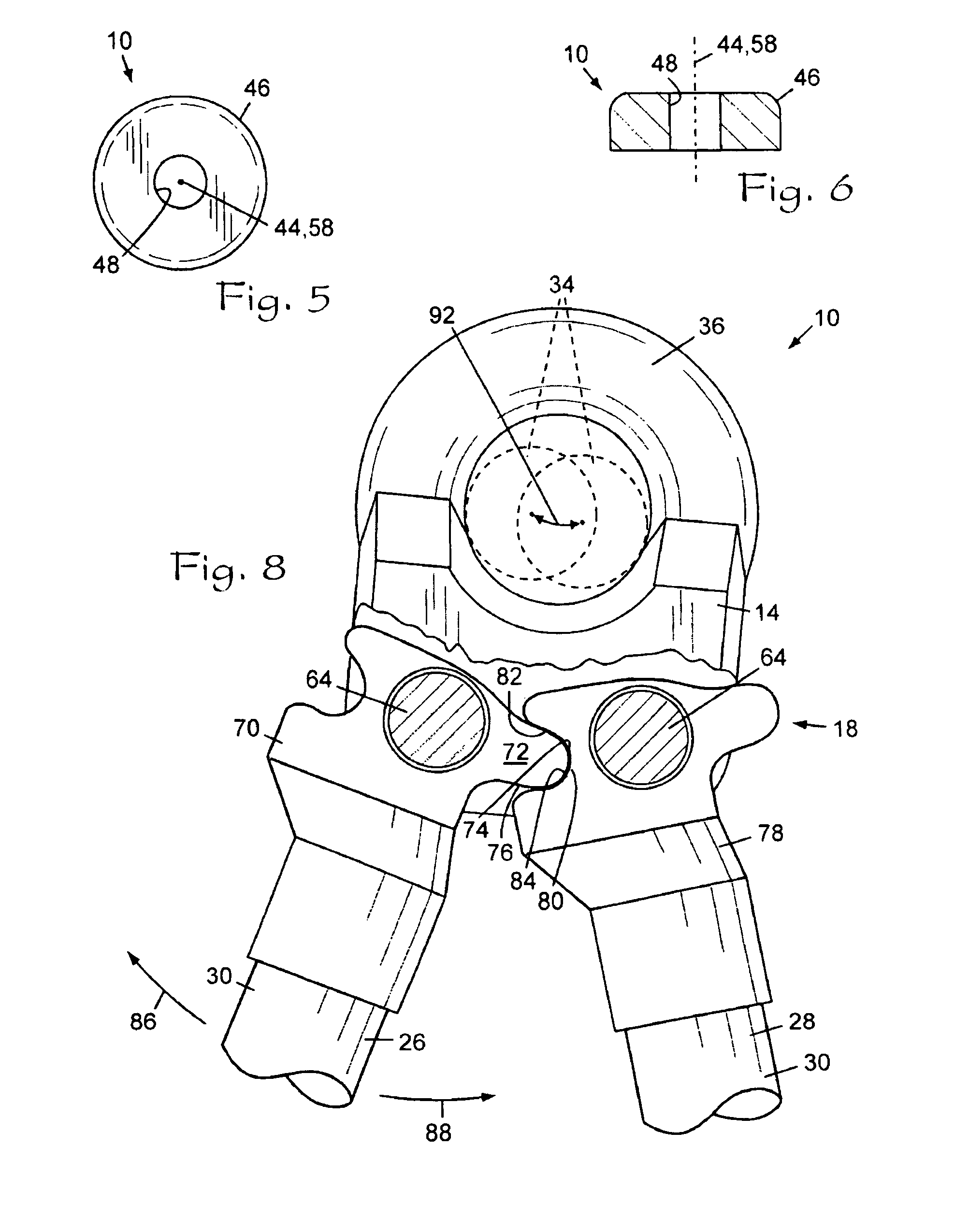Tow bar
a technology of towed bars and towed parts, which is applied in the direction of towed devices, vehicle components, connections, etc., can solve the problems of extremely limited ability of such a hitch combination to accommodate either pitch or roll, disastrous and even fatal consequences, and by itself provides absolutely no ability to accommodate any one of the three pitch, yaw or roll criteria, etc., to achieve reliable performance
- Summary
- Abstract
- Description
- Claims
- Application Information
AI Technical Summary
Benefits of technology
Problems solved by technology
Method used
Image
Examples
Embodiment Construction
[0049]As required, embodiments of the present invention are disclosed herein; however, it is to be understood that the disclosed embodiments are merely exemplary of the invention, which may be embodied in various forms. Therefore, specific structural and functional details disclosed herein are not to be interpreted as limiting, but merely as a basis for claims and as a representative basis for teaching one skilled in the art to variously employ the present invention in virtually any appropriately detailed structure.
[0050]A tow bar typically connects the rear end of a towing vehicle 3 to the front end of a towed vehicle 5. The reference numeral 10 generally refers to a tow bar in accordance with the present invention, as shown in FIGS. 1 through 16. The tow bar 10 includes a towing hitch member 12, a head member 14, at least one tow bar leg 16, a leg connector mechanism 18, at least one locking mechanism 20, towed connector elements 22, and a towed hitch member 24.
[0051]The following...
PUM
 Login to View More
Login to View More Abstract
Description
Claims
Application Information
 Login to View More
Login to View More - R&D
- Intellectual Property
- Life Sciences
- Materials
- Tech Scout
- Unparalleled Data Quality
- Higher Quality Content
- 60% Fewer Hallucinations
Browse by: Latest US Patents, China's latest patents, Technical Efficacy Thesaurus, Application Domain, Technology Topic, Popular Technical Reports.
© 2025 PatSnap. All rights reserved.Legal|Privacy policy|Modern Slavery Act Transparency Statement|Sitemap|About US| Contact US: help@patsnap.com



